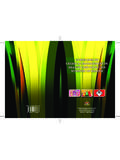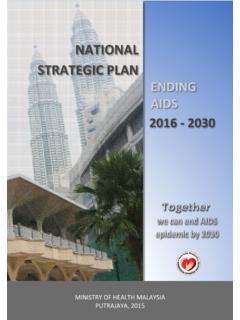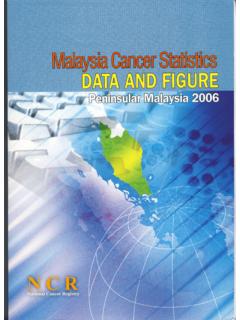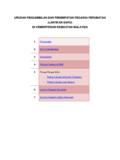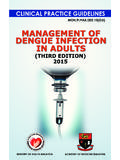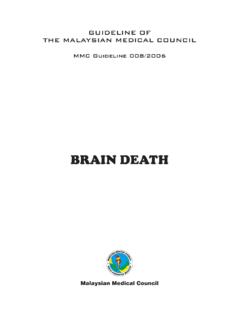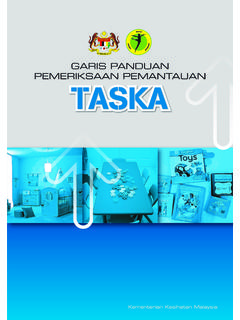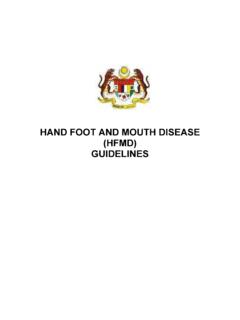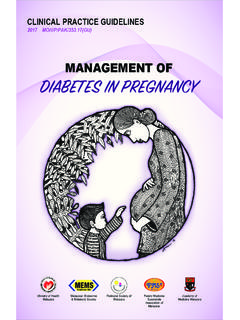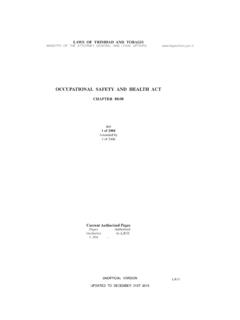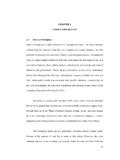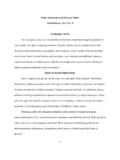Transcription of Sharps Surveillance - moh.gov.my
1 SharpsInjurySurveillanceOccupational health UnitMinistry of health Malaysia2007 MANUALI ntroOne 4/23/09 11:30 AM Page iIntroOne 4/23/09 11:30 AM Page iiContentsFOREWORDvCHAPTER 1: Sharps INJURY NOTIFICATION11. flow on Sharps injury Surveillance in hospital / dental clinic in flow on Sharps injury Surveillance in health clinic / dental clinic in primary care management on Sharps injury Surveillance at State management on Sharps injury Surveillance at Ministry level9 CHAPTER 2: Sharps INJURY MANAGEMENT REGISTRY131. Objectives of aspects and analysis and flow15 SHARPSI njurySurveillanceiiiIntroOne 4/23/09 11:30 AM Page iiiSHARPSI njurySurveillanceivAppendixAppendix 1 :OHU/SIS-1 form17 Appendix 2 : OHU/SIS-2a form25 Appendix 3 : OHU/SIS-2b form31 Appendix 4 : OHU/SIS-3 form35 Appendix 5 : Registry format39 Appendix 6 : Guidelines for completing Sharps Injury Surveillance Form43(OHU/SIS-1 and OHU/SIS-2)IntroOne 4/23/09 11.
2 30 AM Page ivForewordDIRECTOR - GENERAL OF health MALAYSIAWell-managed information and knowledge, along with the right attitude has alwaysbeen the key to sustained development and this dictum holds true in the medicaland health sciences Sharps injuries are one of the most common types of injuries incurred by health careworkers, the estimated rates of injury can vary due to uncertainties about under of occupational blood-borne virus transmission have been reported widely, butassessments of transmission incidence and absolute risk of infection have rarely beenpublished.
3 Besides physical injury, estimates of risk of viral transmission to non-immune health care workers vary from22% for Hepatitis B, for Hepatitis C and for HIV. This Sharps injury Surveillance manual is an attempt madeby the occupational health Unit of Ministry of health , Malaysia to facilitate the process of notification of injuries dueto Sharps within the facilities of the Ministry of health . It is my sincere hope that this manual will be used judiciously to enhance notification and Surveillance of sharpsinjuries. I would like to take this opportunity to congratulate members of the unit for producing this Sri Datuk Dr.
4 Hj Mohd. Ismail Merican,Director General of health , Malaysia,July 2007 SHARPSI njurySurveillancevIntroOne 4/23/09 11:30 AM Page vIntroOne 4/23/09 11:30 AM Page viChapter OneOccupational health UnitMinistry of health Malaysia2007 SHARPSINJURYNOTIFICATIONI ntroOne 4/23/09 11:30 AM Page 1 Sharps Injury SurveillanceINTRODUCTIONH ealthcare workers exposures to blood borne pathogens as a result of injuries caused by needles and othersharps devices are a significant public health concern. Referring to the data collected by OccupationalHealth Unit, Ministry of health from 1998-2005, needlestick injury is the major cause of injuries among theMinistry of health personnel which contributes to a total of % of all injuries.
5 Among the personnel, nursessustained the highest number of needlestick injuries. In the United States of America, the Centers for DiseaseControl and Prevention (CDC) estimates that between 600,000 and 800,000 percutaneous injuries fromcontaminated sharp devices occur each year in health care nationwide and approximately half are sustained byhospital workers. Sharps injuries are preventable and under the occupational Safety and health Act 1994 (OSHA), employers,employees and self employed persons have a duty of care towards their own safety and health , and to that of othersat their workplace.
6 Therefore comprehensive programs should be implemented to reduce these injuries. Elements ofa successful Sharps injury prevention program (as outlined by CDC) include: promoting an overall culture of safetyin the workplace, eliminating the unnecessary use of needles and other Sharps devices, using devices with sharpsinjury prevention features (safety devices), employing safe workplace practices and training health care injury Surveillance is also a key component of a comprehensive Sharps injury prevention )To provide a basis for a registry on Sharps injuries among healthcare workers in Ministry of health , Malaysia.
7 Ii) To provide data for policies, strategies and program development in the prevention of occupational 4/23/09 11:30 AM Page 2 SHARPSI njurySurveillance3 APPLICATIONThe Sharps injury Surveillance format must be completed in case Sharps injuries occur to health care workers. Thisformat consists of two sections namely the OHU/SIS-1 and OHU/SIS-2. OHU/SIS-1 is the epidemiology section and is to be filled by the staff from the Infection Control Team or the occupational health Unit, if the injury happensin the hospital setting or the Location Supervisor if the injury happens in the health clinic setting.
8 Alternatively,OHU/SIS-2 is the management of the exposed health care worker section . This section is further divided into twoparts; OHU/SIS-2a which is the risk assessment part and OHU/SIS-2b which is the treatment and follow-up of theexposed health care worker part. OHU/SIS-2 is to be filled by the attending all Sharps instruments/devices used in healthcare facilities ( all types of needles, scalpel,trochar, broken glass, lancet and other Sharps devices. )Healthcare workers include-Ministry of health staff-Ministry of health trainees-Medical students- health facilities support service workersPROCESS FLOW ON Sharps INJURY Surveillance IN HOSPITAL / DENTALCLINIC IN HOSPITALi) Figure 1, summarizes the process of data / information collection, feedback of information, responsiblepersons and time frame in the hospital / dental clinic in ) If a Sharps injury occurs, the personnel involved should inform the location supervisor immediately (within 24hours).
9 During office hours, the location supervisor is the Sister in-charge of the ward / clinic OR theConcession Company Safety Supervisor (if the concession company s worker is involved) OR the Head of Unit(if no Sister in charge Laboratory, Pharmacy). After office hours, the location supervisor is the Sister on-call OR the Concession Company Safety Supervisor on-call (if the concession company s worker is involved)OR Officer on call in the respective unit ( Laboratory, Pharmacy).IntroOne 4/23/09 11:30 AM Page 3 SHARPSI njurySurveillance4iii) The location supervisor should immediately refer the injured personnel to the designated doctor in theMedical Department for assessment and post-exposure prophylaxis if required (Please refer Chapter 2 on Sharps Injury Management for further details on its management flow).
10 Iv) At the same time the location supervisor should fill in two notification forms namely the Incident ReportingForm and the WEHU A1 and WEHU A 2 forms ) The location supervisor is then responsible to submit the Incident reporting form to the Quality Unit in thehospital for further action to be taken. vi) The location supervisor is also responsible to submit the WEHU A1 & A2 forms to the occupational Safetyand health Committee ) The occupational Safety and health Committee Secretary should review the WEHU A1 & A2 forms forcompleteness. viii) It is the responsibility of the occupational Safety and health Committee Secretary to submit the completedWEHU A1 & A2 forms to the State occupational health Unit within one (1) week of the date of ) At the same time, the occupational Safety and health Committee Secretary should inform the Infection ControlTeam / occupational health Unit by sending a copy of the WEHU A1 )
